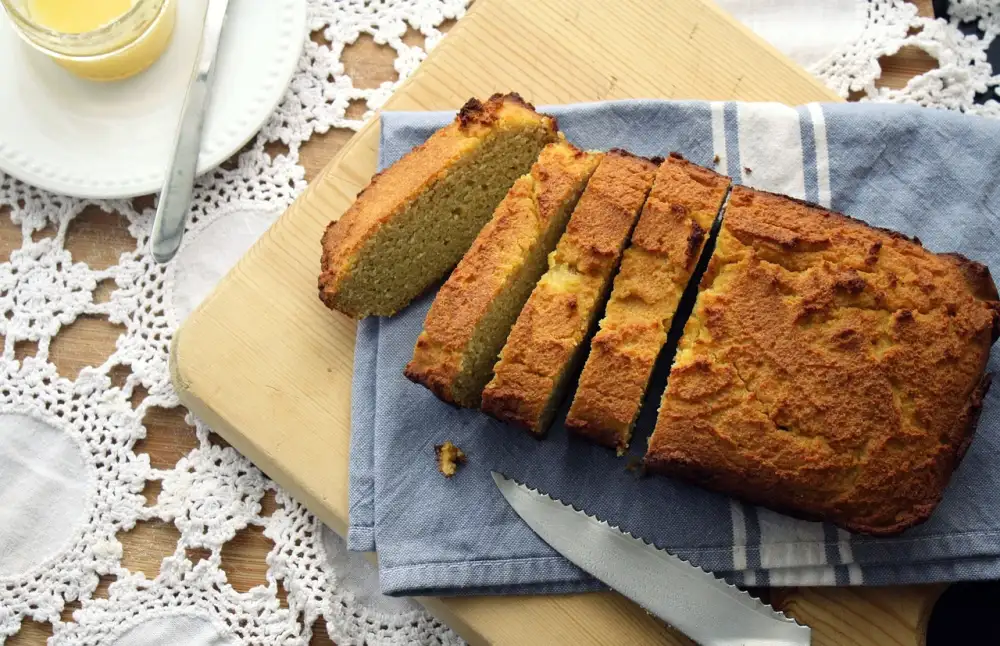Discover the Health Benefits of Gluten-Free Flour: A Guide to Nourishing Alternatives

Gluten-free flour has gained popularity in recent years as more people are becoming aware of the potential health benefits it offers. This type of flour is made from grains and other ingredients that do not contain gluten, a protein found in wheat, barley, and rye. Gluten can cause digestive issues and discomfort for individuals with celiac disease or gluten sensitivity. By using gluten-free flour, these individuals can still enjoy a wide variety of delicious foods without compromising their health. In this article, we will explore the many advantages of using gluten-free flour and provide tips for incorporating it into your baking routine.
Understanding gluten and its effects on health
Understanding gluten and its effects on health is crucial in appreciating the benefits of gluten-free flour. Gluten is a protein found in wheat, barley, and rye that gives dough its elasticity. However, for individuals with celiac disease or gluten sensitivity, consuming gluten can lead to various health issues. These include digestive problems, nutrient deficiencies, inflammation, and even damage to the small intestine. By opting for gluten-free flour, individuals can avoid these adverse effects and improve their overall well-being.
Benefits of using gluten-free flour
Using gluten-free flour offers a range of benefits for both individuals with gluten sensitivity and those looking to improve their overall health. Firstly, it promotes better digestion as gluten can be difficult for some people to break down. By eliminating gluten from your diet, you may experience reduced bloating, gas, and discomfort. Additionally, gluten-free flour can help stabilize blood sugar levels, making it a suitable option for individuals with diabetes or those trying to manage their weight. Furthermore, using gluten-free flour can enhance your energy levels and improve focus by reducing inflammation in the body. It also supports a healthy gut microbiome and strengthens the immune system. Lastly, incorporating gluten-free flour into your diet allows you to explore a wide variety of alternative grains and flours that offer unique flavors and textures, adding excitement to your culinary creations while nourishing your body.
Types of gluten-free flours available
There are several types of gluten-free flours available, each with its own unique properties and flavors. Some popular options include almond flour, coconut flour, rice flour, tapioca flour, and buckwheat flour. Almond flour is made from ground almonds and adds a rich nutty flavor to baked goods. Coconut flour is made from dried coconut meat and provides a light texture. Rice flour is made from finely milled rice grains and works well in both sweet and savory recipes. Tapioca flour, also known as tapioca starch, is derived from the cassava root and adds a chewy texture to baked goods. Buckwheat flour is made from ground buckwheat seeds and has a slightly earthy taste. These different types of gluten-free flours offer versatility in baking and allow individuals with dietary restrictions to enjoy a wide range of delicious creations.
Nutritional value of gluten-free flours
Gluten-free flours offer a range of nutritional benefits that make them a great alternative to traditional wheat flour. These flours are often made from nutrient-rich ingredients such as rice, quinoa, almond, coconut, and chickpeas. They are high in fiber, vitamins, minerals, and antioxidants. Additionally, gluten-free flours are lower in carbohydrates and calories compared to wheat flour. They provide essential nutrients like protein and healthy fats while being suitable for those with gluten sensitivities or celiac disease. Incorporating gluten-free flours into your diet can help diversify your nutrient intake and support overall health and well-being.
Tips for baking with gluten-free flour
When baking with gluten-free flour, it's important to keep a few tips in mind. First, remember that gluten-free flours can be denser than traditional flours, so you may need to adjust your recipe accordingly. Adding a bit of xanthan gum or guar gum can help improve the texture and elasticity of your baked goods. Additionally, make sure to mix your ingredients thoroughly to ensure proper distribution of the flour. Finally, be patient and allow your baked goods to cool completely before enjoying them - this will help them hold their shape better. With these tips in mind, you'll be well on your way to creating delicious gluten-free treats!
Exploring gluten-free flour alternatives
When it comes to gluten-free flour alternatives, there are plenty of options to choose from. One popular choice is almond flour, which is made from ground almonds and adds a nutty flavor to baked goods. Another option is coconut flour, which is high in fiber and imparts a subtle coconut taste. For those looking for a grain-free alternative, cassava flour is an excellent choice. It is made from the root of the cassava plant and has a light texture that works well in various recipes. Other gluten-free flour alternatives include rice flour, quinoa flour, and chickpea flour. Each alternative offers its own unique taste and texture, allowing you to experiment and find the perfect substitute for your favorite recipes.
Addressing common misconceptions about gluten-free flour
Despite the growing popularity of gluten-free diets, there are still some misconceptions surrounding gluten-free flour. One common misconception is that gluten-free flours lack flavor and texture. However, with the right combination of ingredients and baking techniques, gluten-free flours can produce delicious and satisfying results.
Another misconception is that gluten-free flours are only suitable for individuals with celiac disease or gluten sensitivities. While it is true that those with these conditions must avoid gluten, anyone can benefit from incorporating gluten-free flours into their diet. They offer a variety of nutrients and can be a healthier alternative to traditional wheat flour.
Some people also believe that using gluten-free flour means sacrificing taste and quality in baked goods. However, many professional chefs and home bakers have successfully created mouthwatering treats using gluten-free flours. With experimentation and practice, it is possible to achieve the same level of taste and texture as traditional recipes.
Lastly, some may think that gluten-free flours are difficult to find or expensive. Fortunately, there is now a wide range of options available in most grocery stores and online retailers. Additionally, making your own gluten-free flour blends at home can be cost-effective and allows for customization based on personal preferences.
It's important to dispel these misconceptions so that more people can embrace the health benefits of gluten-free flour without hesitation. By understanding the versatility and potential of these alternative flours, we can open up a world of delicious possibilities in our culinary endeavors.
In conclusion, embracing the health benefits of gluten-free flour can be a game-changer for those with gluten sensitivities or celiac disease. By eliminating gluten from your diet and incorporating gluten-free flours, you can experience improved digestion, increased energy levels, and reduced inflammation. With a wide variety of gluten-free flours available in the market and numerous recipes to explore, there has never been a better time to embrace this nourishing alternative. So why not give it a try and savor the delicious creations that gluten-free flour can offer? Your body will thank you!
Published: 17. 12. 2023
Category: Health



